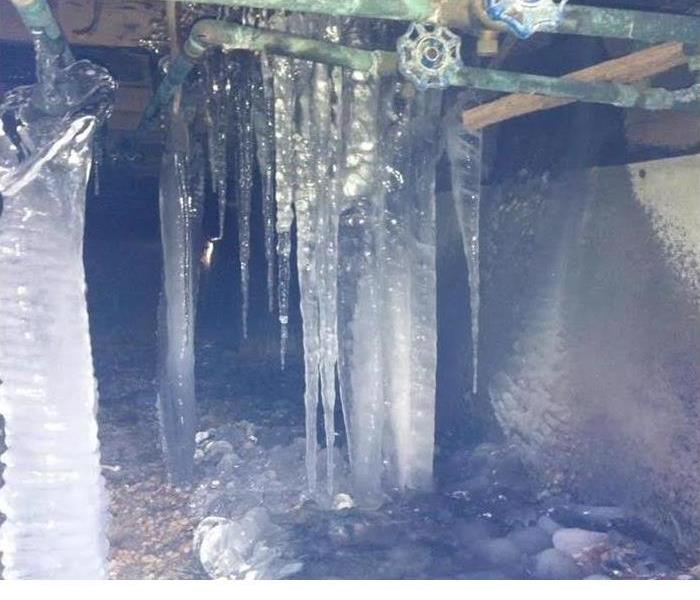Frozen Pipes
1/11/2019 (Permalink)
Frozen water exerts thousands of pounds of pressure per square inch on a pipe and can burst it, causing flooding and major damage to your business. Extensive water damage can also occur as a result of frozen pipes in sprinkler systems during extended power outages in freezing weather.
Preventing Frozen Pipes
Guidance for reducing the risk of pipes freezing:
- Provide a reliable back-up power source, such as a stand by generator, to ensure continuous power to the building.
- Install a monitoring system with notifications if the building’s temperature dips below a pre-determined number.
- Insulate recessed light fixtures in the ceiling to reduce heat entering the attic. Look for visible light inside the attic. If present, insulate or seal. If the space above a suspended ceiling is conditioned, there is no need for added insulation or sealing.
- Insulate and properly seal attic penetrations such as partition walls, vents, plumbing stacks, electric and mechanical chases, and access doors, and all doors and windows.
- Seal all wall cracks and penetrations including domestic and fire protection lines, electrical conduit and other utility service lines.
- Sprinkler systems should be consistently monitored by a central station to provide early detection of a pipe failure.
- Install insulation and/or heat trace tape connected to a reliable power source on parts of wet sprinkler system piping. This includes main lines coming up from underground passing through a wall as well as sprinkler branch lines.
- UL-approved gas or electric unit heaters can be installed in unheated sprinkler control valve/fire pump rooms. If back up power is provided, the heaters should also be connected to this power source.
- A monitored automatic excess flow switch can be placed on the main incoming domestic water line to provide early detection of a broken pipe or valve when the business is closed.
Peace of Mind
Although it seems as if our winters are longer and colder, the winter weather business protection tips described above can help give you piece of mind during the winter months. We believe that implementing these tips can greatly reduce a building’s potential structural loss and loss of business operations due to large snow falls, freezing temperatures and power outages during these times.
8 Ways to Prevent Frozen Pipe Damage for a Business
- Seal Exterior: Seal all cracks, holes, windows, doors and other openings on exterior walls with caulk or insulation to prevent cold air from penetrating wall cavities.
- Seal Interior: Insulate and seal attic penetrations such as partition walls, vents, plumbing stacks, and electrical and mechanical chases.
- Relieve Pipe Pressure: Let all faucets drip during extreme cold weather to prevent freezing of the water inside the pipe, and if freezing does occur, to relieve pressure buildup in the pipes between the ice blockage and the faucet.
- Keep the Building Warm: Install a monitoring system that provides notifications if the building's temperature dips below a pre-determined number.
- Insulate Vulnerable Pipes: Insulate pipes most vulnerable to freezing by using pipe insulation.
- Install Early Detection System: Install an automatic excess flow switch on the main incoming water line to monitor and provide early detection of a broken pipe or valve. Use wireless sensors near water sources.
- Monitor Fire Protection Sprinkler Systems: Monitor sprinkler systems using a central station to provide early detection of a pipe failure and heat unheated sprinkler control rooms.
- Install Backup Power: Provide a reliable backup power source to ensure heat to the building.
Contact us at 716-694-7776 if you have a service need or click here to visit our website to learn more about SERVPRO of Eastern Niagara County's System Services.






 24/7 Emergency Service
24/7 Emergency Service
